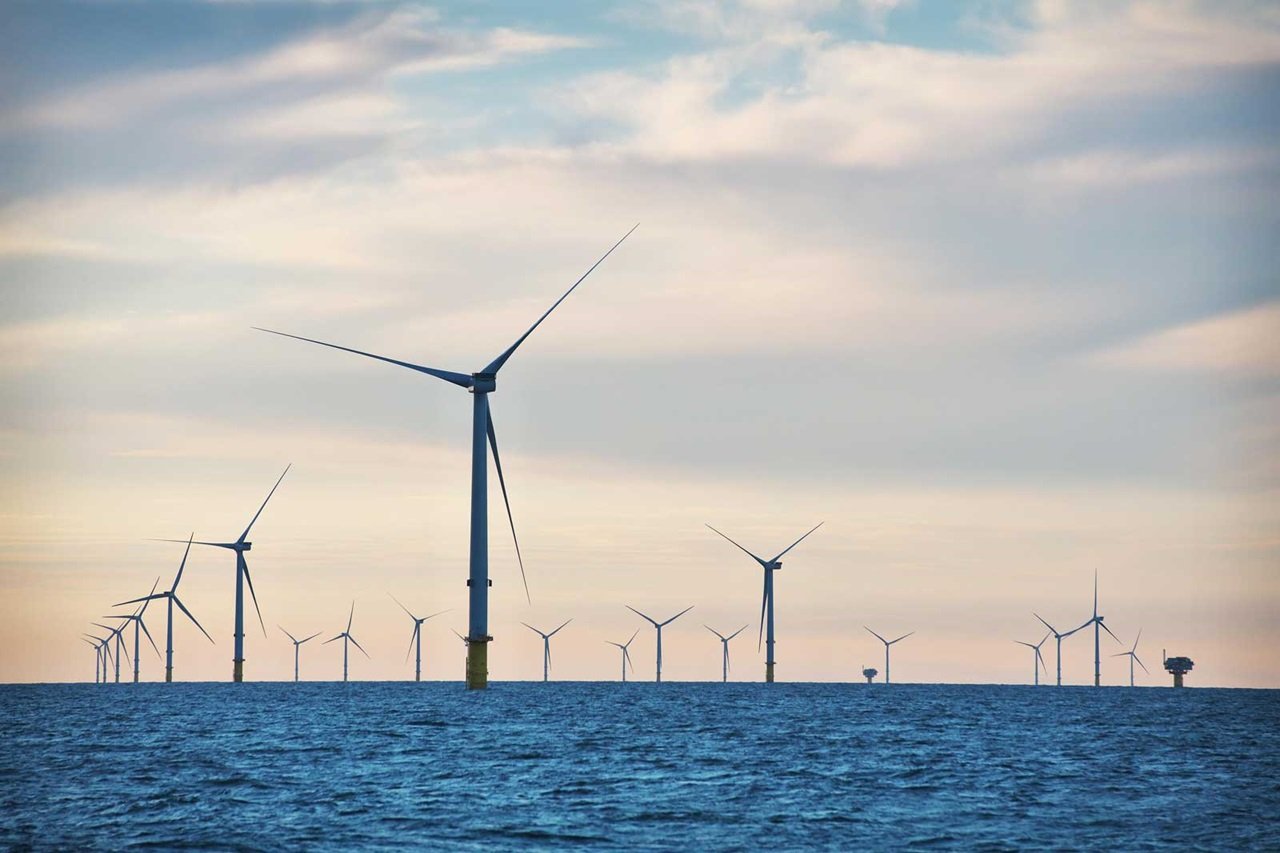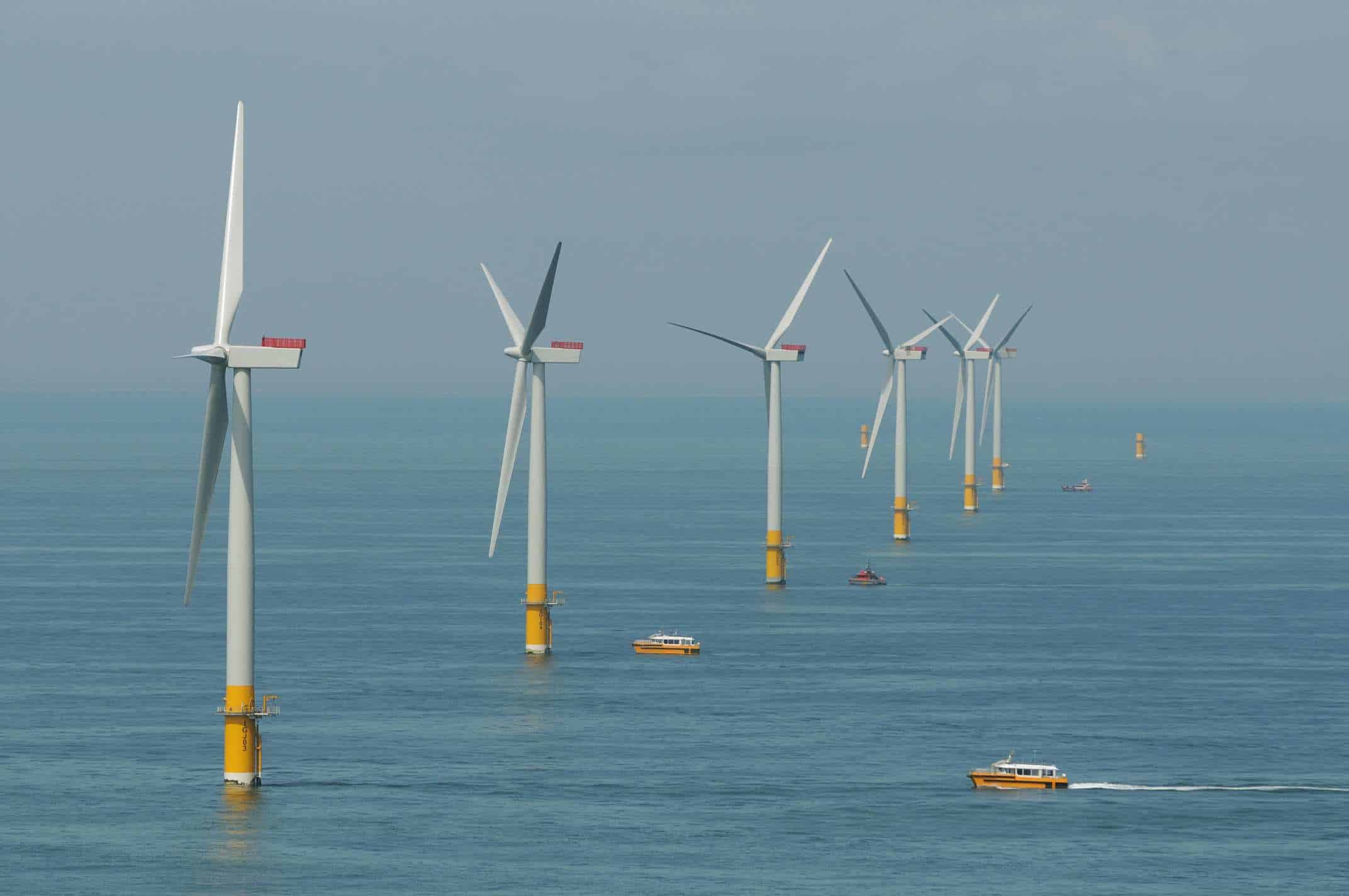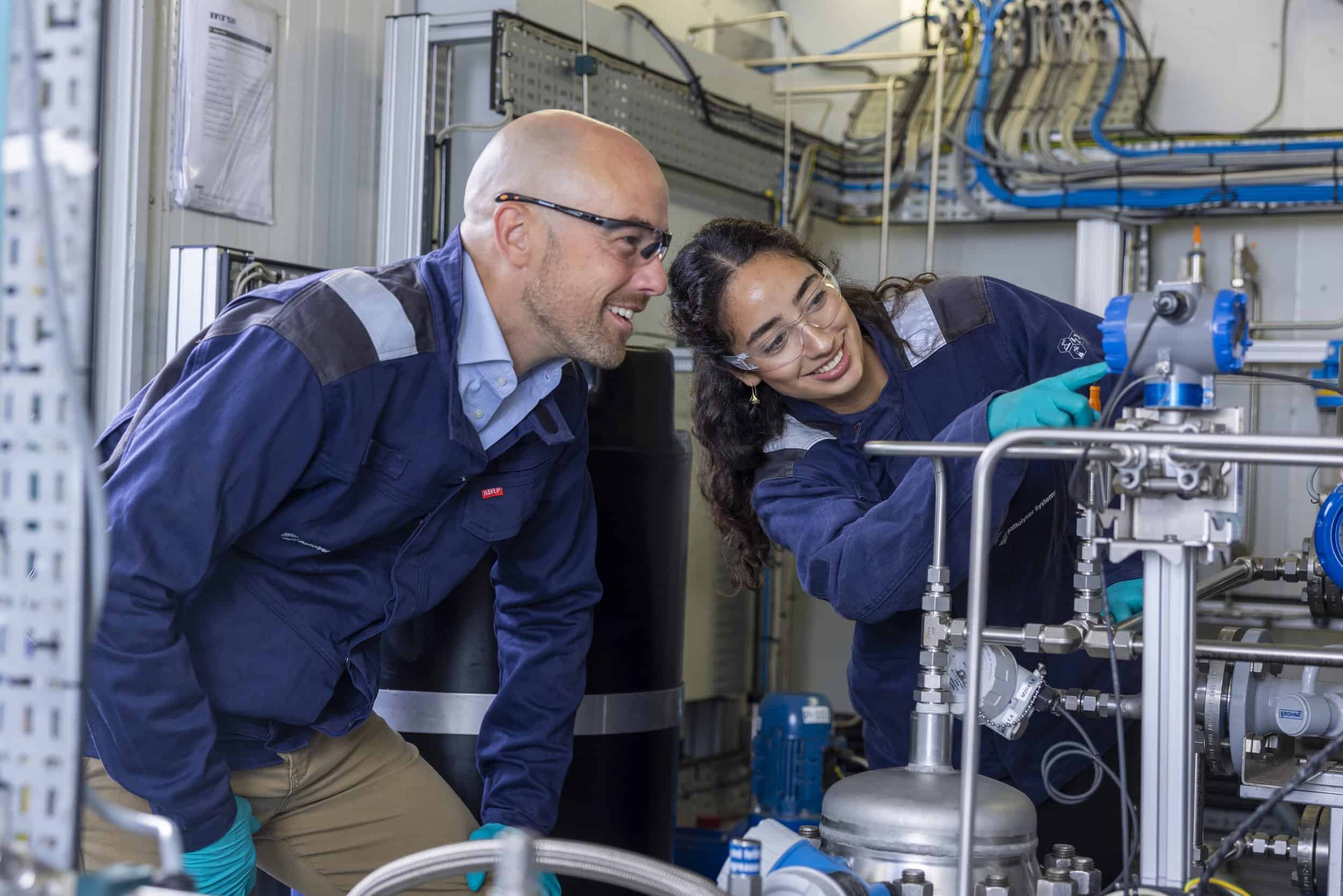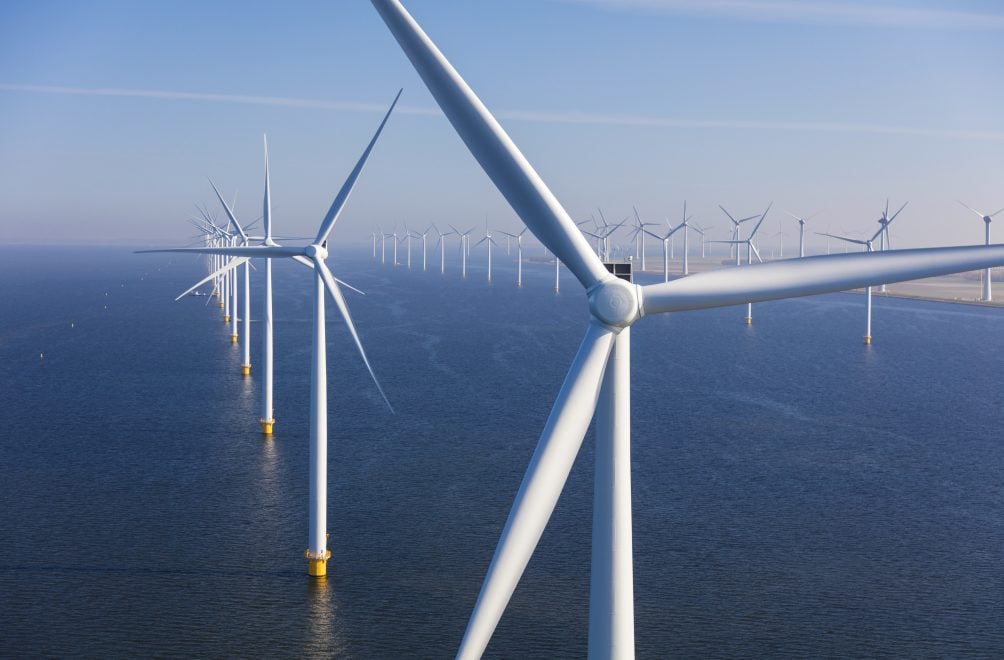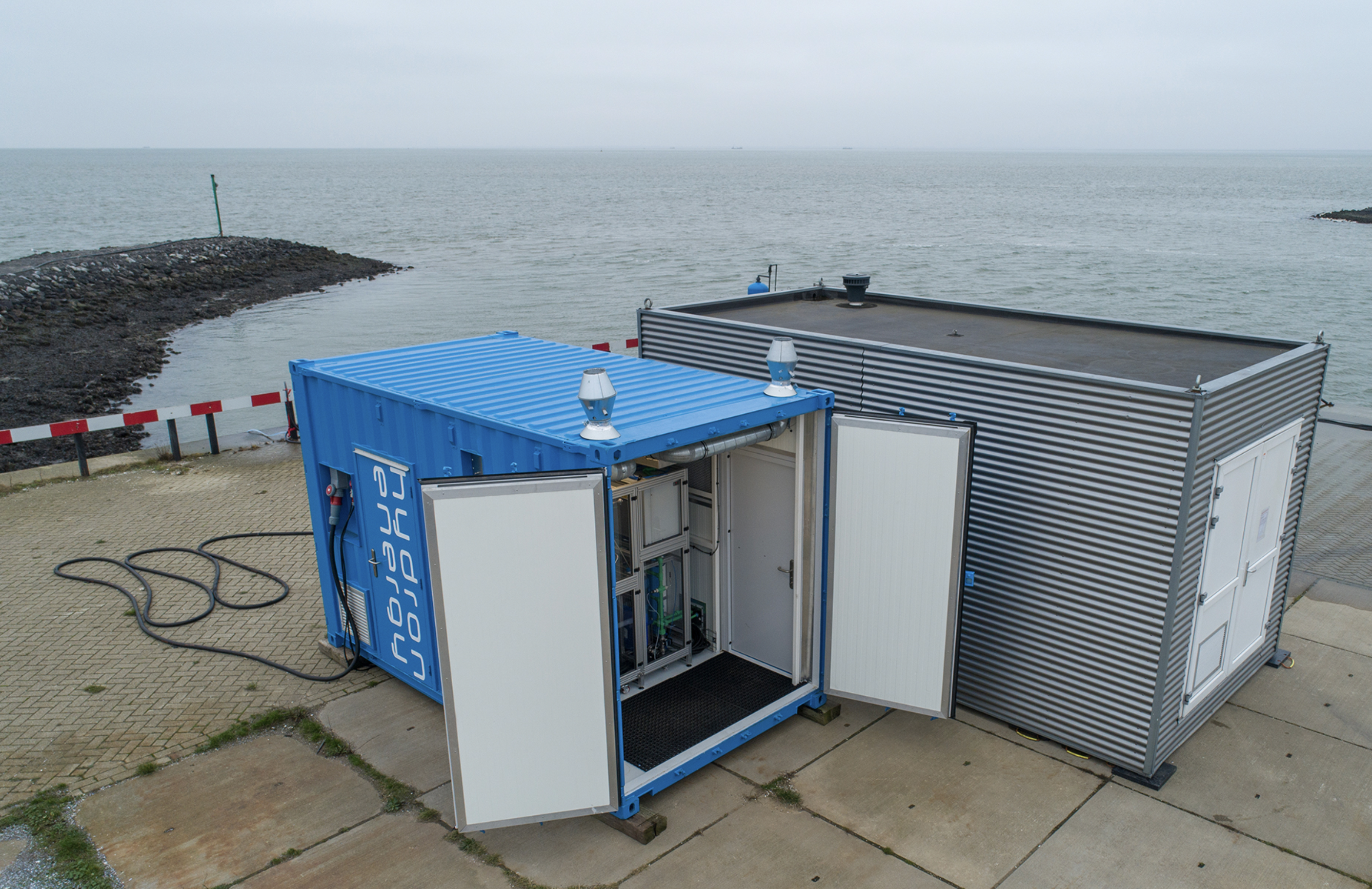
Vattenfall is starting a pilot whereby an offshore wind turbine produces green fuel that can then be piped to land. The pilot turbine is located out at sea near Aberdeen, Scotland. It already produces green electricity for the energy company, but Vattenfall wants to see if it is also possible to (efficiently) produce hydrogen. Schaeffler, one of the largest suppliers of German car parts, is also starting a pilot on the Dutch island of Texel to use seawater to produce hydrogen. The company is working with the Dutch start-up Hydron Energy to realise this.
The system used by Vattenfall is simple: you connect a small electrolyser to the power output of a wind turbine. Such an electrolyser uses the surrounding salt water and green electricity to produce hydrogen and oxygen. You then transport the hydrogen by pipeline to the mainland. Once there, you can use the hydrogen yourself, or you can convert it back into energy with a fuel cell.
Also read our Innovation Origins dossier on the pros and cons of hydrogen
This kind of system is still not very useful since you lose energy when converting to hydrogen. But then again, transporting electricity over long distances also entails losses. Moreover, laying cables in the deep sea is extremely expensive and can disturb marine life. So, for wind farms that are located far from the coast, these kinds of ‘hydrogen windmills’ can come in very handy. Especially if they are located near existing gas pipelines which can then be used to transport hydrogen instead of natural gas.
Hydrogen plants
That wind farms in the future will be sited far from the coast seems certain. They are needed in order to meet the sustainable energy targets. Grid manager Tennet is working on an ambitious plan to construct ‘energy islands’ in the North Sea, where wind energy will be used in large hydrogen plants. The hydrogen would then be transported to the Netherlands, the United Kingdom and Norway.
It is unknown when Vattenfall intends to start work on the hydrogen pilot. Offshorewind.biz only mentions that there is a screening report on hand, which contains the details concerning the project. One of the main hurdles for the project is the cost: electrolysers are expensive and green hydrogen is currently too expensive for many applications, which means that there is relatively little demand.
Also read:
Energy islands in the North Sea: good news for the climate and an opportunity for Dutch entrepreneurs
New market
In collaboration with the Dutch start-up Hydron Energy, Schaeffler wants to look into the opportunities for seawater as a raw material for electrolysis. It involves a feasibility study to begin with. The idea is to use electrolysis to split seawater into oxygen and hydrogen. That hydrogen can then be used as a sustainable fuel. Schaeffler is expecting demand for its car parts to fall as a result of the advance of electric cars, which is why it is looking for a new market.
One thing that makes this news particularly noteworthy is that Schaeffler has had no experience with hydrogen, electrolysis equipment or offshore matters to date. It is a radical change of direction for the company that so far has mainly supplied components to automobile manufacturers and industry.
If it is up to Schaeffler, this should bring about a major change in the world of green hydrogen. Through Hydron Energy, the company has found a way to desalinate seawater very efficiently, which could make the cost of green hydrogen at sea more affordable. According to Schaeffler, €2 per kilogram of green hydrogen is achievable. Once the feasibility study is completed, Schaeffler hopes to start large-scale projects. There is already a pilot project by Hydron Energy on the Dutch island of Texel, but it is not producing significant quantities of hydrogen as yet.
Foto: Het pilotproject van Schaeffler en Hydron Energy op Texel.
This article is courtesy of ChangeInc, which Innovation Origins has an editorial partnership with.



